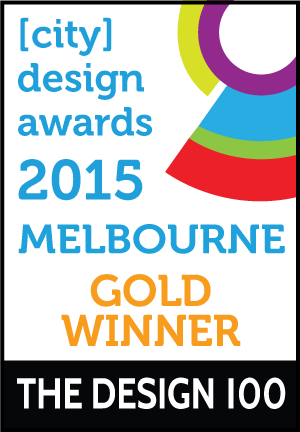Key Dates








Image Credit : Image 2.USE AS HERO IMAGE Credit: Andrew Lloyd, Photographer

Project Commissioner
Project Creator
Project Overview
ASPECT|OCULUS led the master planning, design, co-ordination, and implementation of this Docklands project – the Victoria Harbour City Quarter. Countering the perception of Docklands as windswept and unfriendly with large footprint built form; we delivered a fine grain public realm network of streets, laneways, play spaces, courtyards, temporary activation, integrated public art, a plaza, park and promenades. Our place led curatorial program has connected Docklands to the city and people with each other. Over seven years we have ensured the implementation of the masterplan’s sustainability principles, from materiality and process, to green infrastructure, public transport and public realm.
Key areas include:
1.Buluk Park: a significant public open space with outdoor reading rooms and events spaces servicing the City of Melbourne’s Library at the Dock and Maternal Health Centre
2.High amenity streets and urban reforestation; public transport infrastructure and bike lanes
3.Integrated public art, two exemplary playspaces, pocket parks and the relocation of the community garden
4.Temporary transformation of an undeveloped site into an outdoor fitness hub, with sports courts running circuits, outdoor exercise facilities and a dog park
5.‘Water Plaza’ a waterfront urban lounge and maritime transport hub
Team
FULL CONSULTANT TEAM Lead Consultant Public Realm/Landscape Architect: ASPECT|OCULUS Client/Developer: Lend Lease Engineering: GHD Stakeholders: Places Victoria City of Melbourne Architects: 6 Degrees Bates Smart Clare Design Hayball Lend Lease Design Nettleton Tribe Public Artist: Sally Smart Wind Advisor: MEL Consulting Builders: Lend Lease Australian Native Landscapes Naturform Irrigation consultant: Landscape & Irrigation services Water fountain consultant: NCA Water Features International Fountain Australia Access consultant: Morris Goding Access Consulting
Project Brief
ASPECT OCULUS were the lead consultant, who in collaboration with Lend Lease and GHD interrogated, tested and implemented the urban design vision of the Victoria Harbour – City Quarter Masterplan. As landscape architects and urban designers, and the central authors of the original masterplan, our multidisciplinary team were well placed to deliver this major piece of Melbourne’s urban fabric that combines public infrastructure, streets, lanes, public open space, cultural landscapes and passive and active recreation opportunities for all ages. Our unique role was to consider both the experience, performance and function of this complex urban ecosystem.
The masterplan set out a number of design strategies that the implementation phases have sought to deliver including but not limited to:
– reconnecting Docklands to the city
– creating a destination with a distinct character and human scale
– providing improved environmental comfort
– emphasising an enhanced intimate pedestrian experience
– breaking down the pattern of large scale development into a finer grain more comparable to the Melbourne CBD
– creating places for residents, workers and visitors to experience and enjoy.
Project Innovation/Need
Special Factors
>Mitigation of extensive wind and climate issues in order to enable quality public occupation of the multiple spaces.
>Successful implementation of extensive suite of WSUD, green infrastructure and the City of Melbourne’s Urban Forest Diversity Guidelines / Strategy, including the extensive use of structural soils, bioretention, stormwater detention and re-use.
>A staged urban regeneration project has transformed a heavily industrialised area into a place to work, live and visit.
>Buluk Park named after the Aboriginal language Buluk name meaning wetlands or swamp, was chosen as a reflection of the original environment. Drawing on the site’s rich ecological & cultural history the Park’s water play channels evoke the Yarra’s twisting course and the tidal fluctuations of river and harbour.
>Connections and accessibility – facilitating active transport; permeability and way finding; equitable access; integrated movement patterns; integrated land use and transport
>The City Quarter combines safe accessible streets, the continuation of the tram along Collins Street and the introduction of a super stop, and the extension of the bike path network. Fine grain secondary and tertiary streets and lanes create strong view lines to primary streets with water views helping orientation.
Design Challenge
Designing for change over time
The design, co-ordination and delivery of Victoria Harbour’s public realm has been a reflexive process. The scale and duration of the implementation of our work has enabled us to undertake ongoing and critically valuable site assessments of the performance of this complex urban landscape, from the establishment and performance of trees and plants to the use and appropriation of spaces. In conjunction with the City of Melbourne, we have been able to implement in the Masterplan responses to the Urban Forest guidelines and the Dockland Public Realm Strategy principles as they have finished their development cycles. For instance, the implementation of the Masterplan has anticipated future sea level rise by placing buildings, parks and waterfront promenades at or above the adjusted mean high water levels. Opportunities for engagement with the water have been maximised where possible by maintaining important vistas and through the installation of walkways and pontoons that move with the changing tide.
Sustainability
• Incorporation of green infrastructure & the successful implementation of an extensive suite of WSUD & bio-retention, stormwater detention & re-use.
• Introduction of structural soils & contiguous deep soil networks.
• The implementation of the City of Melbourne’s Urban Forest Diversity Strategy.
• Protecting and enhancing urban ecology and biodiversity through the introduction of hundreds of trees.
• Use of natural materials where possible, re-use of site sourced wharf timber, remnant construction materials were used throughout the temporary activation space.
Landscape Design
This award celebrates creativity and innovation in the use of practical, aesthetic, horticultural, and environmental sustainability components, taking into account climate, site and orientation, site drainage and irrigation, human and vehicular access, furnishings and lighting.
More Details

